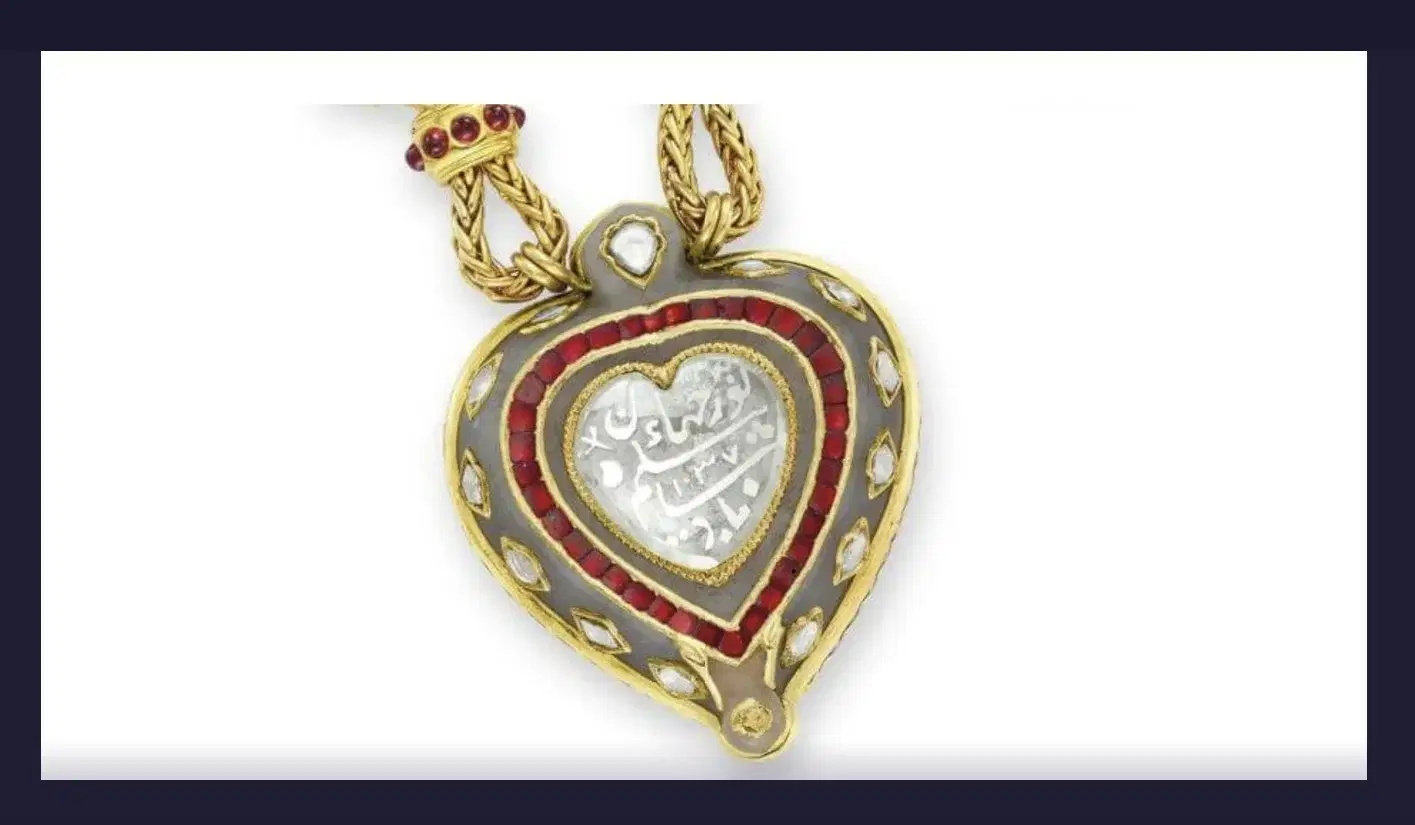The Taj Mahal Diamond traces its roots back to the 17th century. The heart-shaped, table-cut diamond features inscriptions in both Persian and Arabic languages, clearly suggesting the possible origin of the diamond.
As already mentioned, Empress Nur Jahan was the original owner of this diamond and jade pendant. Her name has been immortalized in an inscription titled “Nur Jahan Begum Padshah; 23; 1037." The English translation of the inscription is Nur Jahan, Lady of the Padshah; 23; 1037. After she married Jahangir Shah in 1611, the emperor commissioned his most skillful artisans to design the iconic gemstone. After months of rigorous design work, the pendant was inscribed with Nur Jahan’s name.
In 1037 A.H. (After Hijra), Jahangir Shah presented the Taj Mahal Diamond as a gift to her wife in appreciation for her timeless love and support. The eventful gifting ceremony marked the end of Jahangir Shah’s 22-year rule. It is important to remember that in the Gregorian calendar, 22 years is almost equivalent to 23 years in the Islamic Lunar calendar. This fact might help explain the reason behind the number 23 that appears in the inscription. Also, historians suggest that the number 1037 in the inscription is a date on the Islamic calendar that translates to 1627 AD.
While Nur Jahan’s name appears on the diamond, it is believed that she might never have worn it; for as soon as her husband died in October 1627, her stepson, Prince Khurram, ascended the throne and became the new Shah Jahan. One of the priority agendas in Khurram’s order of business was eliminating everything that he perceived as a potential threat to his reign. This decree included his brothers and male cousins, and since he did not trust Nur Jahan either, he placed her under house arrest.
Before Khurram’s ascent to the throne, Nur Jahan had supported the short reign of Shahriyar, a younger brother to Khurram. However, Shahriyar was overthrown and subsequently blinded before he was put to death.
The new emperor ruled with an iron fist, and power struggles within the family were evident after the death of Jahangir Shah. Though not formally documented, Nur Jahan may have surrendered the diamond willingly to the new tyrant emperor. The emperor later gifted the gemstone to his favorite wife, Mumtaz Mahal. Some historians also suggest that Mumtaz Mahal and Nur Jahan related well, possibly implying that Nur Jahan may have gifted her the Taj Mahal Diamond on her own accord.
Empress Mumtaz Mahal was not the only wife of Shah Jahan, but she was indeed his favorite and most beloved. According to historians, she was the power behind the throne. In 1631, the new owner of the Taj Mahal Diamond, Mumtaz Mahal, died a tragic death while giving birth to her 14th child.
Much as he ruled dictatorially, the death of Mumtaz Mahal left Shah Jahan devastated. He reportedly ate no food for eight days and mourned his wife for a year. He then decided to commission the Taj Mahal mausoleum, a structure whose construction had been ongoing for over 20 years, in the memory of his wife. In what followed, the diamond, formerly known as The Nur Jahan Diamond, was officially christened the Taj Mahal Diamond.
It is believed that the diamond remained within the Mughal treasury until the neighboring Persia, under the rulership of Nadir Shah, invaded and overrun Delhi and Agra in February 1739. The diamond might have been lost in the ensuing plunder. Nadir Shah was later assassinated in 1749 by his bodyguards, who stole most of the valuables then under the custody of the Iranian treasury, which is how the diamond possibly ended up in the West. It was heard of next when Richard Burton purchased the stone in 1972. The diamond eventually went up at a New York City auction sale in 2011 for a whopping $8.8 million.

